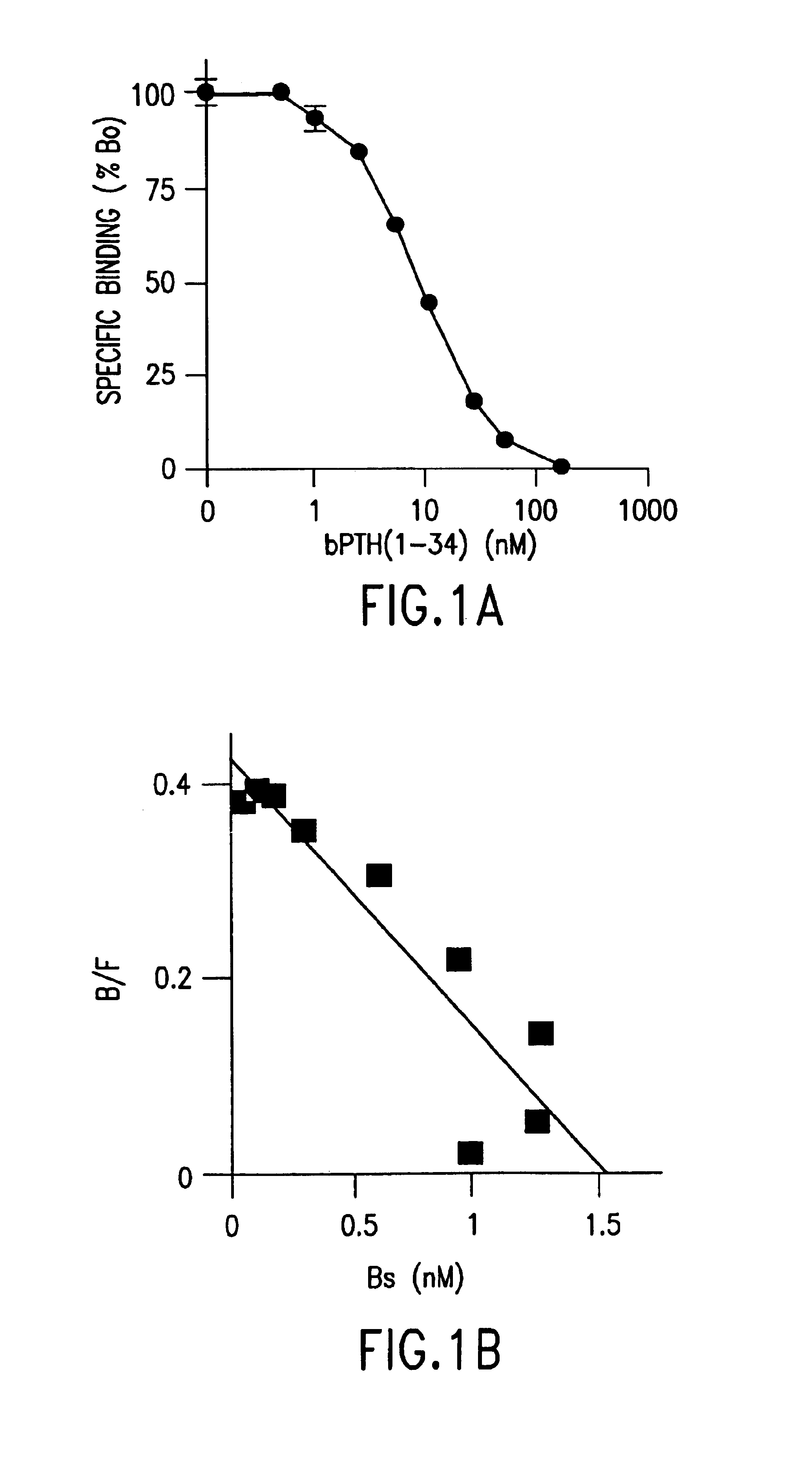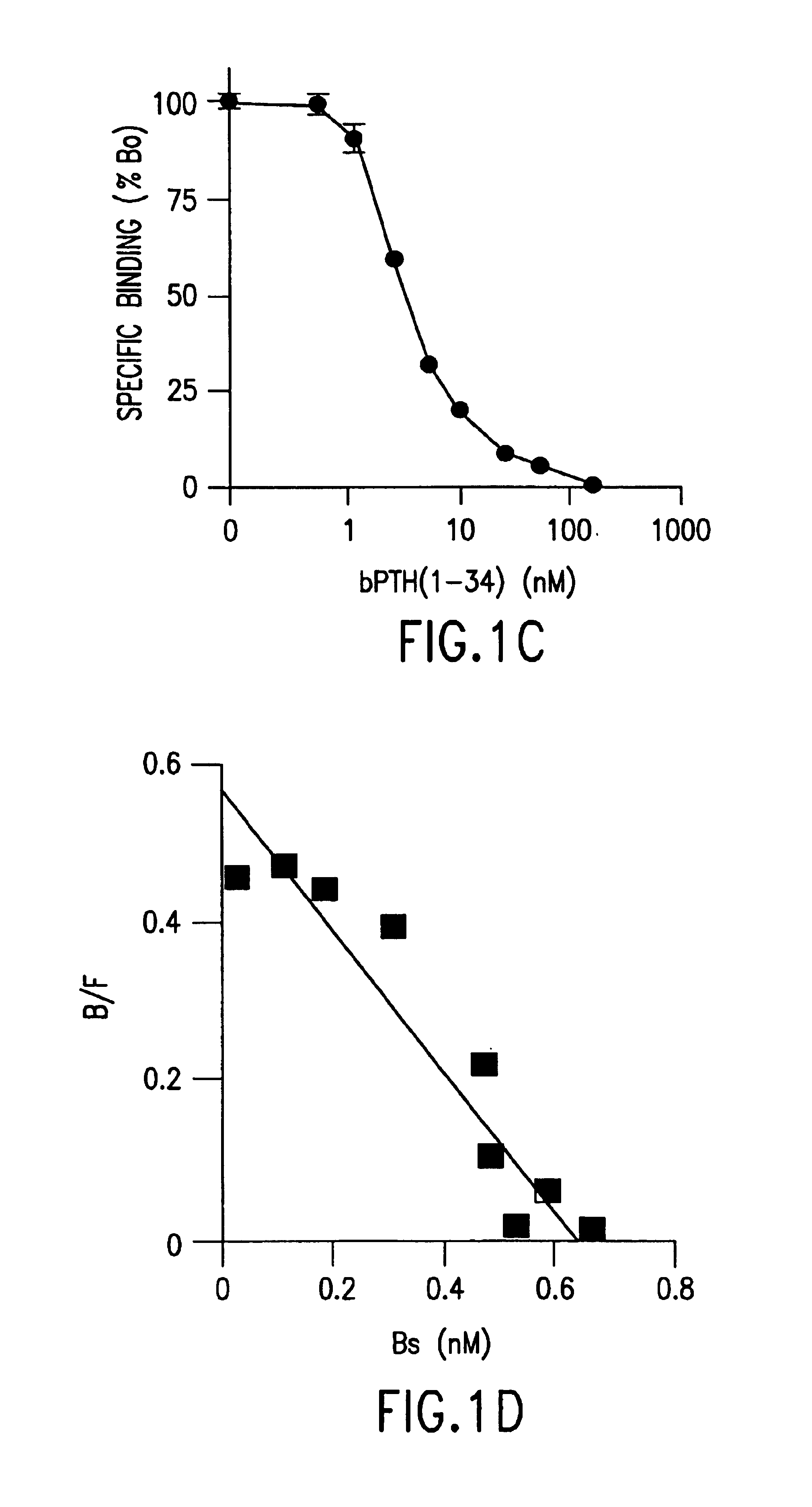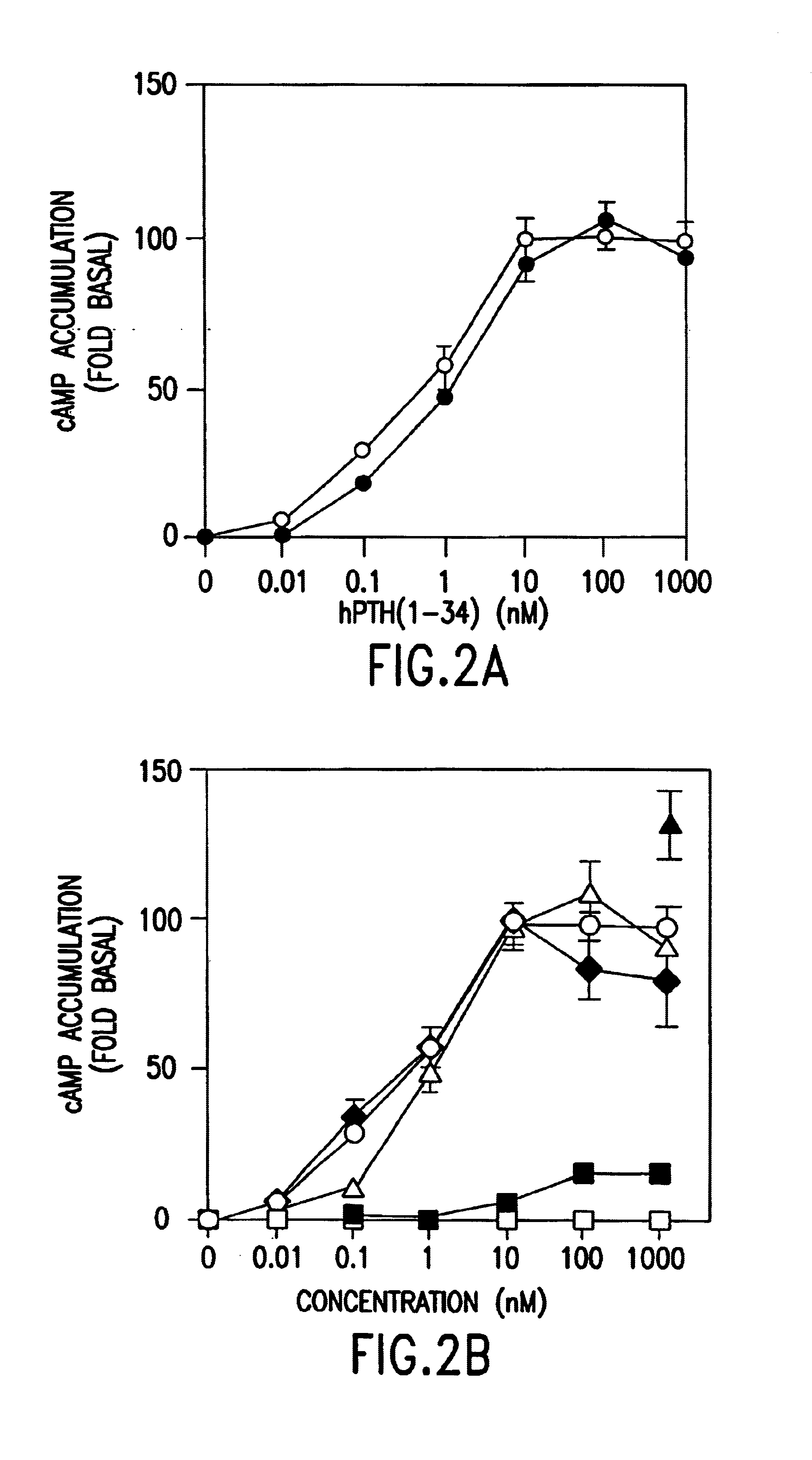Screening assays for G protein coupled receptor agonists and antagonists
a technology assay, which is applied in the field of g protein coupled receptor agonists and antagonists, can solve the problems that the effect of alterations in human pthr expression on the character of signal transduction response(s) has not been systematically analyzed
- Summary
- Abstract
- Description
- Claims
- Application Information
AI Technical Summary
Benefits of technology
Problems solved by technology
Method used
Image
Examples
example 1
Plasmid Transfection and Isolation of Clones
[0052]The cloned porcine kidney-derived cell line, LLC-PK1 (Bringhurst, F. R., et al., Endocrinology 132:2090-2098 (1993)) and subclones isolated after stable transfection with human PTH / PTHrp receptor cDNA were maintained in DMEM supplemented with 7% FBS and 1% penicillin / streptomycin with or without 1000 ug / ml G418 (all from GIBCO-BRL, Grand Island, N.Y.) under 5% CO2 in air. To prepare cell lines stably expressing the human PTH / PTHrP receptor, confluent monolayers of cells were transfected with a full-length human PTH / PTHrP receptor cDNA constructed in the mammalian expression vector pcDNAIneo (Invitrogen, San Diego, Calif.) (Schipani, E., et al., Science 268:98-100 (1995)). In some cases, cells were co-transfected with the receptor cDNA and a plasmid encoding a dominant-negative PKA regulatory subunit mutant, “REV AB” (Clegg, C. H., et al., J Biol Chem 262:13111-13119 (1987)). Transfections were performed using the calcium-phosphate pr...
example 2
Radioligand Binding
[0056]Specific binding to the PTH / PTHrp receptor was measured as previously described (Bringhurst, F. R., et al., Endocrinology 132:2090-2098 (1993)), with some modification. In brief, the cells were seeded into 24-well plates at a density of 2.5×105 cells / well and cultured for a further 2 days before study. Cell layers were rinsed with ice-cold Buffer A [50 mM Tris-HCl (pH 7.7), 100 mM NaCl, 2 mM CaCl2, 5 mM KCl, 0.5% FBS, and 5% heat-inactivated horse serum] and then incubated with 125I-labeled [Nle8,18, Tyr34]bovine (b) PTH(1-34) (1×105 cpm / well), with or without unlabeled peptide, in 0.5 ml of Buffer A for 6 h in the cold room (2-8° C.). The binding reaction was terminated by aspirating the incubation mixture, after which the cells were washed twice with 0.5 ml of ice-cold Buffer A. After solubilizing the cells with 0.5 ml of Lysis Buffer (0.5 N NaOH+0.1% Triton X-100), measurements of radioactivity and protein were performed to calculate the receptor number p...
example 3
Human PHTR Signaling in LLC-PK1 Cells
Methods
Peptides and Other Reagents
[0058]All reagents, unless otherwise specified, were obtained from Sigma (St. Louis, Mo.), and all isotopes were purchased from Dupont-New England Nuclear (Boston, Mass.). [Nle8,18, Tyr34]bPTH(1-34), [Tyr34]hPTH(1-34), hPTH(1-31), hPTH(3-34), hPTH(7-34), and hPTHrp(1-36) were synthesized with carboxy-terminal arnide groups. The [Nle8,18, Tyr34]bPTH(1-34) was radioiodinated by the chloramine-T method and purified as previously described (Bringhurst, F. R., et al., Endocrinology 132:2090-2098 (1993)).
Cellular cAMP Accumulation
[0059]Cells were seeded into 24-well plates at a density of 2.5×105 cells / well and cultured for a further 2 days before study. The cells were rinsed once with 0.5 ml of ice-cold Buffer B [10 mM HEPES (pH 7.4), 130 mM NaCl, 5 mM KCl, 1.2 mM CaCl2, 1 mM MgCl2, 1.2 mM Na2HPO4 5 mM glucose, and 0.1% heat-inactivated BSA] supplemented with 1 mM isobtylmethylxanthine (IBMX), and placed on ice. Treat...
PUM
| Property | Measurement | Unit |
|---|---|---|
| pH | aaaaa | aaaaa |
| pH | aaaaa | aaaaa |
| temperature | aaaaa | aaaaa |
Abstract
Description
Claims
Application Information
 Login to View More
Login to View More - R&D
- Intellectual Property
- Life Sciences
- Materials
- Tech Scout
- Unparalleled Data Quality
- Higher Quality Content
- 60% Fewer Hallucinations
Browse by: Latest US Patents, China's latest patents, Technical Efficacy Thesaurus, Application Domain, Technology Topic, Popular Technical Reports.
© 2025 PatSnap. All rights reserved.Legal|Privacy policy|Modern Slavery Act Transparency Statement|Sitemap|About US| Contact US: help@patsnap.com



